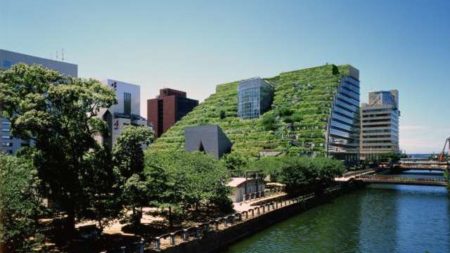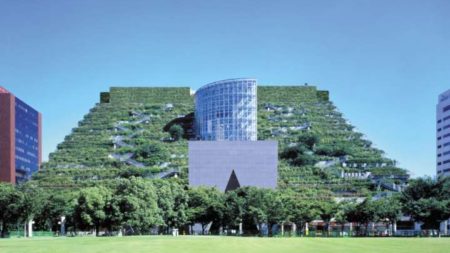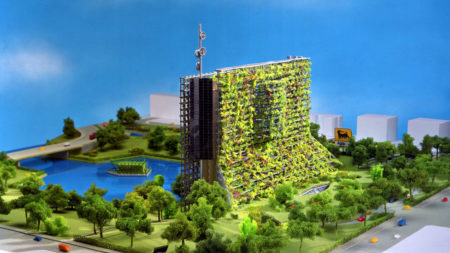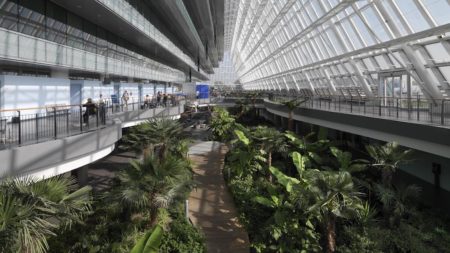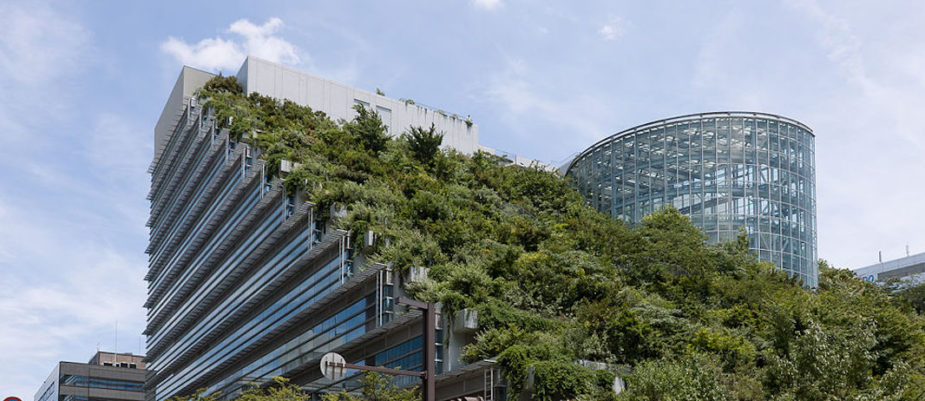
The jury of the 26th edition of the Compasso d’Oro ADI awarded for Career Emilio Ambasz, one of the leading international architects and designers.
He is holder of 220 industrial and mechanical patents, 3 Compasso d’Oro for industrial design and an incredible number of awards conferred all over the world.
In addition the Argentine Master is a true pioneer of green architecture in the world, as evidenced by the ACROS Center in Fukuoka which recently celebrated its 25th anniversary.
Just like his design products, his architectures are present all over the world and Ambasz’s approach to green architecture was truly prophetic, when “vertical forest” were not yet trendy.
It is true that Hanging Gardens have existed since 660 BC, but after the Babylonians the construction of green architecture seemed almost forgotten until Emilio Ambasz – before Patrick Blanc and Stefano Boeri – gave life to the ACROS Center in Fukuoka, a building of 100,000 square meters, the first major architectural work in symbiosis with nature, which has become an example and model of inspiration spread throughout the world; the result of innovative research and vision started forty years ago.
An intuition that has profoundly influenced the world of design throughout the world, inspiring the coexistence between architecture and nature.
An approach that Ambasz has also applied in other projects, including the Mestre hospital, recognized as the first “health garden”, and in 1998 the predecessor vertical forest for the ENI headquarters in Rome.
“Seeing others using vegetation in their projects makes me realise that my mission is starting to show signs of development. Hearing some of them affirming the paternity of such ideas makes me feel like a mythologic character, even though I know that this is only a foreseen freudian destiny.” stylishness quotes the Argentinian Master.
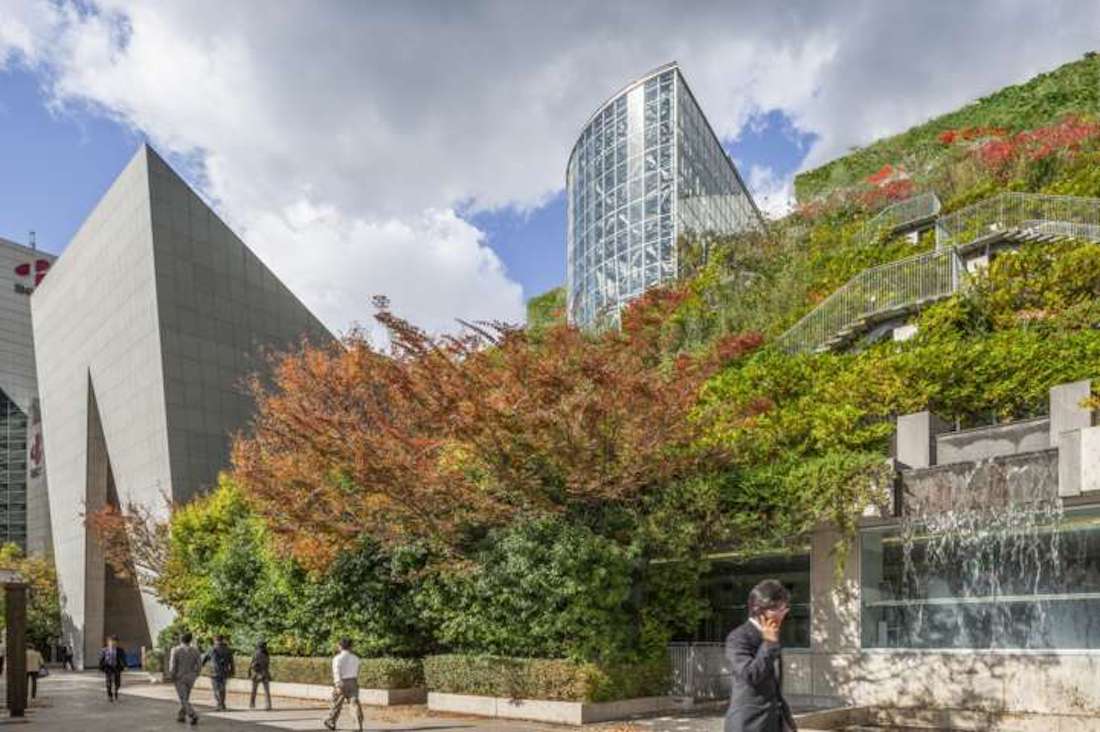
Fukoka’s ACROS centre 25 year later
The 100,000-sqm building in the city centre has given the area a new life, being the first big design enterprise that dialogues with nature and becoming a model of inspiration around the world.
The building designed by Emilio Ambasz, whose pictures keep traveling the world, was born out of an innovative research and vision that started forty years ago. This intuition has deeply influenced the world of architecture and it has brought inspiration to designs that mix nature and architecture.
There are 14 gardens on the rooftop of the building, featuring pools and water features, and there is also a panoramic view that overlooks the harbour and the surroundings. The area is open to the public. Emilio Ambasz commented that “the building is at the heart of a city that featured a 2 hectares plaza, and now it still has a 2 hectares plaza.”
According to Ambasz, ACROS (Asian CrossRoad Over the Sea )stands as a demonstration that “the dominant concept according to which ‘cities are for buildings and suburbs are for parks’ is wrong.
It is too easy to relegate nature in the suburbs and leave greyness in the city. It is an idea that completely lacks imagination.” In urban centres with a high density of population the interests of developers, the need of new buildings and the need of open public green areas can be intertwined.
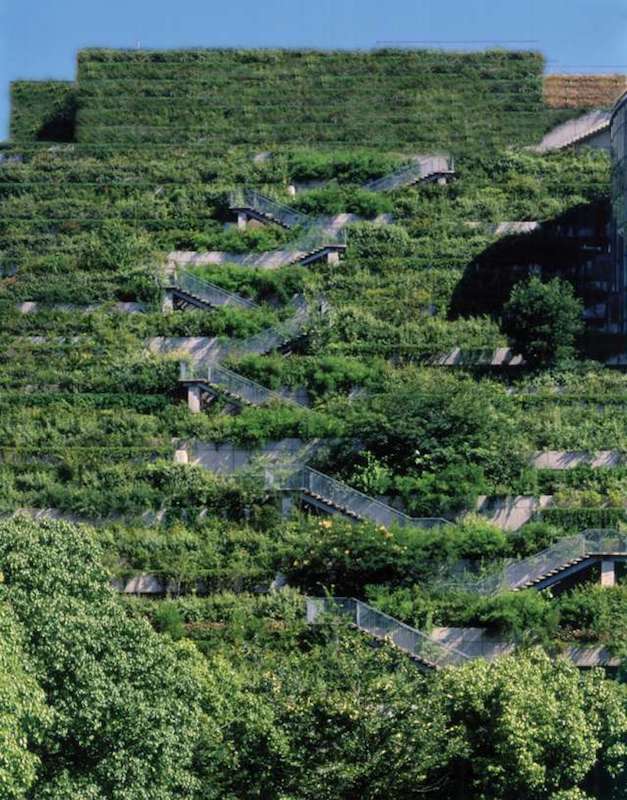
ACROS has indeed made a step forward by allowing a huge urban building to coexist with a public open space. The symbiosis of these two elements is also certified by a research conducted by Takenaka Corporation, Kyushu University and the Nippon Institute of Technology according to which the building contributes to the reduction of the heat island that surrounds the area, to the reduction of energy consumption and of CO2 emission, and it also allows a 15-degrees difference between the interior and exterior of this amazing pyramid.
The interior of the building extends on a surface of 97,000 sqm and it includes an exhibition area, a museum, a 2000-seat theatre, congress rooms, government- and private offices, a tourist information centre, shops and 4 underground levels.
“In order to build something that respects the environment one needs technology” says Ambasz, “but in order to do real architecture one also needs art. We never have to think that the technological systems of a building that respects the environment and saves energy are separate from to the emotions generated by a work of art. If there is a drive in my ideas, it derives from the fact that I believe architecture to be not only pragmatic, but also emotional.”
Emilio Ambasz is a prophet, a poet, he has been a pioneer of green architecture since the Seventies, and he still is a reference for his innovative thoughts that aim at connecting nature and buildings: “Each building constitutes an intrusion into the vegetation, it challenges nature: we have to conceive an architecture that rises above the intrusion, that stands as an act of reconciliation between nature and buildings. We need to design buildings that are so intermingled with the surrounding landscape that one gets the idea that they are just the same thing.”
At the inauguration of the ACROS centre in Fukoka 25 years ago, 76 varieties and 37,000 plants featured on the building, which now have grown and developed to 120 varieties and 50,000 plants.


